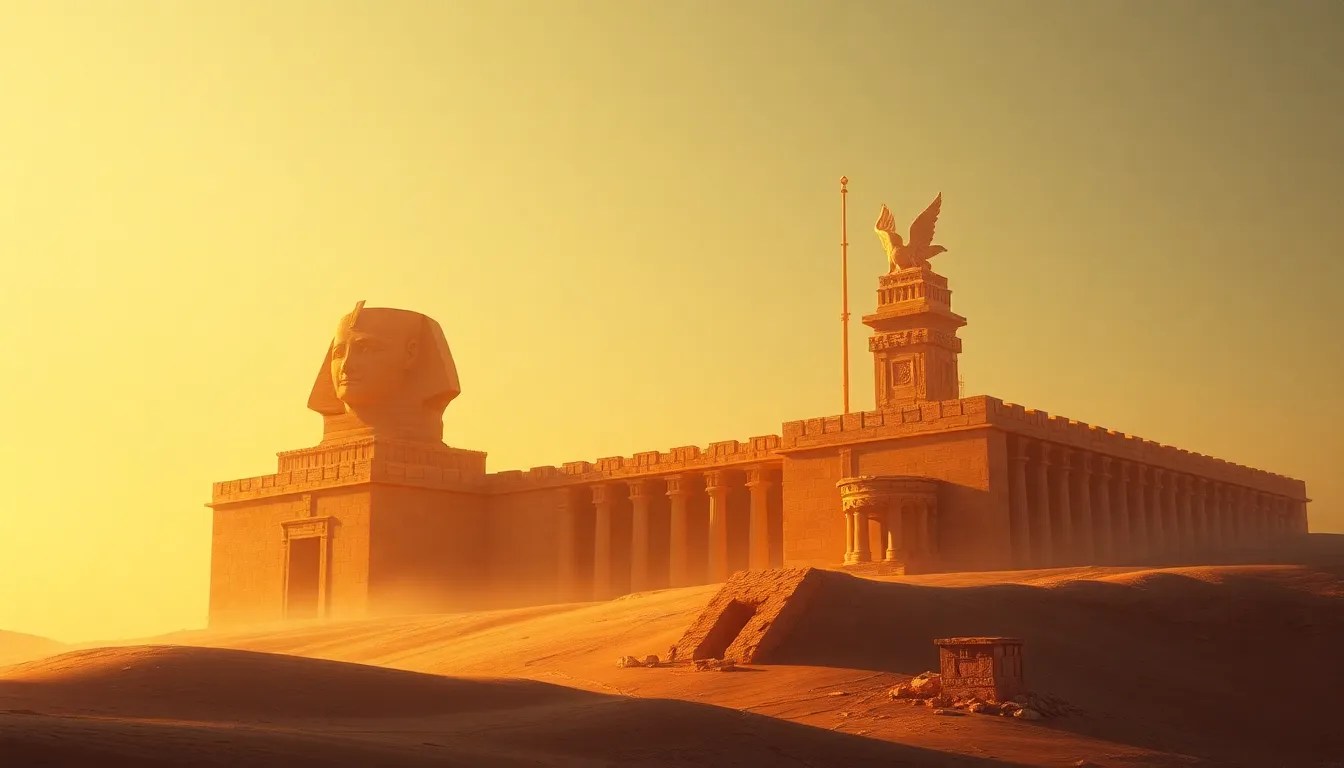Atrahasis: A Study of Myth and Morality
I. Introduction
The Atrahasis epic stands as one of the most significant narratives within Babylonian mythology, offering insights into the ancient Mesopotamian understanding of creation, morality, and human existence. This ancient text not only recounts the tale of Atrahasis, a figure emblematic of resilience and negotiation, but also presents profound philosophical questions regarding the nature of the gods and the responsibilities of humanity.
The purpose of this study is to explore the interplay of myth and morality within the Atrahasis narrative, examining how these themes manifest in the text and what they reveal about the cultural and ethical landscape of ancient Mesopotamia.
II. Historical Context of Atrahasis
A. Origins and dating of the Atrahasis epic
The Atrahasis epic is believed to have been composed during the Old Babylonian period, around the 18th century BCE. It exists in several versions, the most complete of which was discovered in the library of Ashurbanipal in Nineveh. The text is written in Akkadian and reflects the literary and religious traditions of its time.
B. Cultural and historical backdrop of Mesopotamia during its composition
During the time of Atrahasis’s composition, Mesopotamia was a complex society characterized by the rise of city-states and the establishment of religious institutions. The worship of various gods was integral to daily life, and the society was marked by agricultural innovations and the development of legal codes. The interplay between divine will and human agency was a common theme in Mesopotamian thought, making the Atrahasis epic a crucial reflection of these cultural dynamics.
III. Summary of the Atrahasis Narrative
A. Key characters: Atrahasis, the gods, and humanity
The narrative centers around several key characters:
- Atrahasis: A wise and devout man chosen by the gods to survive the impending flood.
- The gods: A pantheon including Enlil, the chief deity, who becomes increasingly frustrated with humanity.
- Humanity: Created to serve the gods but ultimately viewed as a source of noise and annoyance.
B. Major plot points: Creation, the flood, and the quest for immortality
The epic unfolds through several major events:
- The creation of humanity from clay, intended to relieve the gods of their labor.
- The gods’ growing discontent with humanity’s noise and overpopulation.
- The decision by Enlil to send a flood to destroy humanity as punishment.
- Atrahasis’s negotiation with the god Ea, who warns him of the flood and advises him to build an ark.
- The flood’s devastation and Atrahasis’s eventual survival, leading to divine concessions regarding human mortality.
IV. Themes of Creation and Destruction
A. The creation of humanity and the gods’ intentions
The creation of humanity in the Atrahasis epic reflects the gods’ desire for companionship and assistance. However, it also underscores the inherent limitations and flaws of divinity. The initial intention to create beings to serve the gods leads to unforeseen consequences, highlighting the unpredictable nature of creation.
B. The moral implications of divine decisions and human suffering
The narrative raises critical questions about divine morality. The flood serves as a drastic measure taken by the gods, leading to mass suffering. This act forces readers to consider the ethical implications of divine authority and the justification of their actions in the face of human anguish.
V. The Role of the Flood in Myth and Morality
A. Comparison with other flood myths (e.g., Gilgamesh, Noah)
The flood narrative in Atrahasis shares similarities with other ancient flood myths, such as the Epic of Gilgamesh and the Biblical account of Noah. Key parallels include:
- The warning received by a chosen individual.
- The construction of a vessel to survive the deluge.
- The aftermath involving a covenant or promise from the divine.
B. Moral lessons derived from the flood narrative and its consequences
The moral lessons from the flood narrative emphasize themes of humility, the dangers of overreach, and the necessity of coexistence between the divine and human realms. The calamity serves as a reminder of the potential consequences of human actions that provoke divine wrath.
VI. Human Agency and Divine Will
A. Atrahasis as a figure of resilience and negotiation with the divine
Atrahasis epitomizes resilience against divine authority through his role as a negotiator. He is not merely a passive recipient of fate; instead, he actively engages with the gods, seeking to understand and mitigate their wrath. This portrayal elevates him as a symbol of human agency within the context of divine will.
B. The moral responsibilities of humans in the face of divine authority
The epic invites readers to reflect on their moral responsibilities when facing divine authority. Atrahasis’s story suggests that while humans may be subject to the whims of the gods, they also possess the ability to influence their destinies through wisdom, negotiation, and moral integrity.
VII. Modern Interpretations and Relevance
A. Contemporary readings of Atrahasis and their moral implications
Modern interpretations of the Atrahasis myth often focus on its ethical dimensions, exploring themes of environmental stewardship, social justice, and the balance between progress and sustainability. The narrative’s relevance continues to resonate in contemporary discussions about humanity’s impact on the world.
B. The impact of Atrahasis on modern literature and ethical discussions
The Atrahasis epic has influenced numerous literary works and ethical debates, serving as a foundational text for understanding the complexities of human existence in relation to the divine. Its enduring legacy can be seen in various adaptations and references throughout literature, art, and philosophy.
VIII. Conclusion
In summary, the Atrahasis epic provides a rich tapestry of myth and morality, revealing the intricate relationship between divine intentions and human actions. Through the exploration of creation, destruction, and human agency, the narrative encourages reflection on the ethical dimensions of existence and the responsibilities that accompany it. The legacy of Atrahasis continues to inform our understanding of human nature and ethics, making it a timeless study in the interplay of myth and morality.



